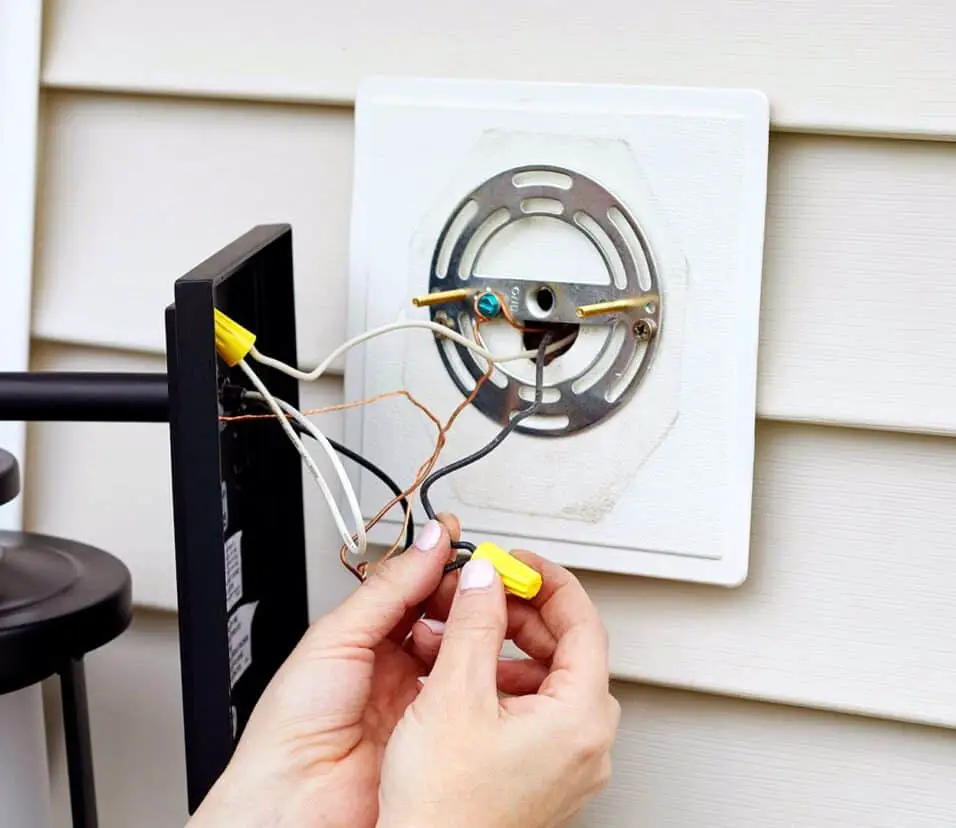How To Paint A Fiberglass Exterior Door
Introduction
How To Paint A Fiberglass Exterior Door: Your home’s exterior door is not just a functional element; it’s a statement piece that welcomes guests and adds curb appeal. If you have a fiberglass exterior door, you have a durable and energy-efficient choice. However, over time, exposure to the elements can cause the paint to fade or peel, leaving your door looking tired. The good news is that painting a fiberglass exterior door is a rewarding DIY project that can breathe new life into your entryway.
In this comprehensive guide on “How To Paint A Fiberglass Exterior Door,” we will take you through the step-by-step process of transforming your fiberglass door from drab to fabulous. We’ll cover everything you need to know, from preparing the surface and choosing the right paint to applying the paint and ensuring a smooth finish. Whether you’re a seasoned DIY enthusiast or a first-time painter, our instructions and tips will help you achieve professional-looking results.
Enhancing the look of your home starts at the front door, and with the right guidance, painting your fiberglass exterior door can be a satisfying and cost-effective way to boost your home’s appearance and value.

What kind of paint do you use on an exterior fiberglass door?
latex-based paint
If you have a fiberglass door, latex-based paint is always a great choice. One of the most important reasons to opt for latex-based paint is that it’s more environmentally friendly and produces less paint fumes than oil-based paints. Not only does this make it an eco-conscious choice, it’s also better for your health.
When painting an exterior fiberglass door, it’s crucial to use a paint that is specifically formulated for both exterior surfaces and fiberglass material.
Here are the types of paint you should consider using on an exterior fiberglass door:
Exterior Latex Paint: Water-based latex paint is a popular choice for painting fiberglass doors. It offers good durability, flexibility, and weather resistance. Look for paints labeled as “exterior” or “exterior-grade” and ensure they are suitable for fiberglass surfaces. Latex paints are easy to work with, dry relatively quickly, and provide a smooth finish.
Acrylic Paint: Acrylic paints are another suitable option for fiberglass doors. They share many qualities with latex paints, including water-based formulation and durability. Acrylic paints offer excellent adhesion, color retention, and resistance to fading caused by UV exposure.
Urethane Paint: Urethane-based paints, particularly water-based urethanes, are known for their exceptional durability and long-lasting finish. They provide a hard, protective shell that resists abrasion, chemicals, and moisture. Urethane paints can offer superior protection against the elements, making them a great choice for exterior surfaces.
Enamel Paint: Enamel paints are oil-based or water-based paints that offer a smooth and durable finish. Water-based enamel paints are often preferred for their lower VOC content and easy cleanup. Enamels provide a glossy finish that can enhance the appearance of your fiberglass door.
Gel Stains: If you’re looking to retain the natural look of the fiberglass texture, gel stains can be a good option. Gel stains penetrate the surface to enhance the color and texture of the fiberglass, while still providing some protection against the elements.
Do you have to prime a fiberglass door before painting?
PAINTING FIBERGLASS DOORS
This material usually does not need to be primed, but painting is required. Wait for a good dry day without too much sunlight shining on the door if you’re painting with the door in place or prepare a well-ventilated dry space to work in if you’re removing the door.
Yes, it’s highly recommended to prime a fiberglass door before painting, especially if it’s a new or bare fiberglass surface. Primer serves several essential purposes:
- Adhesion: Primer helps the paint adhere securely to the fiberglass surface, ensuring it doesn’t peel or bubble over time.
- Smooth Finish: It creates a smooth, even surface for the paint to adhere to, minimizing imperfections and achieving a professional-looking finish.
- Sealing: Primer seals the surface, preventing moisture from penetrating the fiberglass and causing issues like delamination or mold growth.
- Enhanced Durability: It improves the durability and longevity of the paint job, protecting the door against outdoor elements.
Choose a high-quality, exterior-rated primer that is compatible with acrylic latex paint. Apply the primer according to the manufacturer’s instructions, typically with a brush or roller, and allow it to dry completely before painting.
How many coats of paint do I need for a fiberglass door?
Failure to use a high-quality paint with good blocking resistance may result in a door that sticks shut even after the paint has dried. Promptly paint all exterior surfaces, including door panel edges, with two coats of quality exterior paint with good blocking resistance.
The number of paint coats required for a fiberglass door depends on several factors, including the color you’re painting over, the color you’re painting, and the coverage provided by your chosen paint. However, as a general guideline:
- For a new or bare fiberglass door, it’s typically recommended to apply a primer coat followed by two coats of paint. This ensures proper coverage and durability.
- If you’re painting over an existing paint color that’s similar to your new color, you may be able to achieve satisfactory results with two coats of the new paint.
- When changing from a dark color to a lighter one, you might need an extra coat or two to ensure full coverage and color accuracy.
Always follow the paint manufacturer’s recommendations for the specific product you’re using, as some paints may have different coverage capabilities. Additionally, be sure to allow each coat to dry thoroughly before applying the next to achieve the best results.
What paint is best for fiberglass?
Acrylic paint is less likely to crack and blister, and will hold up well to cleaning. This water-based paint is easy to apply, and contains fewer chemicals, so is more environmentally friendly. Use acrylic latex paint for indoor or outdoor fiberglass projects.
The best paint for fiberglass surfaces, including fiberglass doors, is high-quality exterior acrylic latex paint. Acrylic latex paints are well-suited for fiberglass because they offer excellent adhesion, durability, and weather resistance. Look for paints specifically labeled for exterior use, as they are formulated to withstand the elements.
When choosing your paint, consider the following factors:
- UV Protection: Select a paint with UV protection to prevent fading, especially if your door is exposed to direct sunlight.
- Built-in Primer: A paint with a built-in primer can simplify the painting process, but you should still use a separate primer for new or bare fiberglass surfaces.
- Color: Choose a color that complements your home’s exterior and your personal preferences.
- Sheen: The sheen level (e.g., satin, semi-gloss, or gloss) is a matter of personal preference, but higher sheens often provide better durability and are easier to clean.
- Brand: Opt for a reputable paint brand known for its quality and longevity.
Before painting, thoroughly clean and prepare the fiberglass surface and follow the paint manufacturer’s instructions for application and drying times to ensure the best results and long-lasting finish.
Should you paint a fiberglass door with a brush or roller?
If your door is fiberglass or steel, consider using a foam roller to avoid brush or roller marks. A paint brush – for the details and edgework. Assorted cloths, sponges, etc – for wiping away various residues, splashes and other inevitable messes. Painter’s tape – to mask anything you DON’T want painted.
When painting a fiberglass door, you have the option to use either a brush or a roller, and the choice ultimately depends on your preference and the results you want to achieve.
- Brush: Using a high-quality paintbrush is a common method for painting fiberglass doors. Brushes allow for precise control, especially around edges, panels, and decorative details. They’re also useful for getting into tight spaces and ensuring even coverage on textured surfaces. If you prefer a traditional, hand-painted look, a brush is an excellent choice. Just be sure to use a brush with synthetic bristles designed for use with latex paint for smoother application.
- Roller: A roller can be a faster and more efficient option, particularly for larger, flat sections of the door. It’s a great choice if you want to cover a large surface area quickly. To minimize roller marks, use a high-quality, low-nap roller cover. Rollers provide a smoother finish on flat surfaces but may require a brush for detailed areas and edges.
In many cases, a combination of both methods works best. Use a brush for precision and detail work, such as edges and panels, and then use a roller to cover the larger, flatter sections of the door. This approach can help you achieve a balance between speed and a smooth finish.
Do you need special paint to paint over fiberglass?
Any resin-based paint is suitable for application on FRP, but I recommend using epoxy-based paints with epoxy-based FRP resins and polyester-based paints on polyester-based FRP. I make this recommendation because like materials bond better.
You don’t necessarily need special paint to paint over fiberglass, but it’s crucial to choose the right type of paint and ensure proper surface preparation for the best results. Here are some key considerations:
- Paint Type: Select a high-quality exterior acrylic latex paint, which is well-suited for fiberglass surfaces. Acrylic latex paints are durable, adhere well, and resist weathering. Make sure the paint is labeled for exterior use.
- Primer: For new or bare fiberglass surfaces, it’s essential to use an exterior-rated primer before applying paint. The primer enhances adhesion, provides a smooth surface, and prevents moisture penetration.
- Compatibility: Ensure that the primer and paint you choose are compatible. Some paint brands recommend specific primers for optimal results.
- Preparation: Properly prepare the fiberglass surface by cleaning it thoroughly, sanding to create a lightly textured surface for better paint adhesion, and removing any loose or peeling paint if you’re repainting an existing door.
- UV Protection: Consider using a paint with UV protection, especially if the door is exposed to direct sunlight, to prevent fading over time.
By choosing the right type of paint, using a primer when necessary, and properly preparing the surface, you can achieve a successful and long-lasting paint job on your fiberglass door.
How do you paint a fiberglass door without brush marks?
There are 2 ways to paint a door without unsightly brush marks:
- A paint sprayer. This is not my preference because it is so much work. …
- A foam roller. I much prefer to use a foam roller when painting any type of furniture or door.
Painting a fiberglass door without brush marks requires careful preparation, the right tools, and meticulous technique. Here’s how to achieve a smooth, brush-mark-free finish:
Surface Preparation: Clean the fiberglass door thoroughly to remove any dirt, grease, or debris. Sand the surface lightly using fine-grit sandpaper to create a slightly rough texture, which helps the paint adhere better. Wipe away dust after sanding.
Choose the Right Paint: Opt for a high-quality, self-leveling paint that’s specifically designed for doors or exterior surfaces. Water-based or latex paints tend to level out better and have a smoother finish.
Use a Foam Roller: Foam rollers are excellent for achieving a smooth finish without brush marks. Roll the paint onto the door using even, overlapping strokes. Start in the center and work your way outward.
Work in Sections: To avoid drying lines and edges, work on smaller sections at a time. Keep a wet edge by slightly overlapping each new stroke with the previous one.
Thin Coats: Apply thin coats of paint rather than thick ones. Thick coats are more likely to leave brush marks and take longer to dry.
Leveling Additives: Some paints come with leveling additives that help the paint settle evenly as it dries, reducing the appearance of brush marks.
Vertical Strokes: If your door has a textured pattern, like wood grain, use vertical strokes with the roller to mimic the natural pattern.
Light Sanding: After the first coat dries, lightly sand the surface with fine-grit sandpaper to smooth out any imperfections. Wipe away dust before applying subsequent coats.
Multiple Coats: Applying two or more thin coats of paint can help even out the finish and cover any missed spots.
Can you paint directly on fiberglass?
Fiberglass consists of finely spun fibers cast into epoxy, resin, vinyl ester, or thermoplastics. It is a popular material in building and industrial applications for its strength. Before painting, lightly sand (abrade) and degrease. With Acrylics or Oils, paint directly on the surface or prepare with desired ground.
Yes, you can paint directly on fiberglass, but proper preparation is essential to ensure the paint adheres well and provides a lasting finish. Follow these steps when painting fiberglass:
Clean the Surface: Thoroughly clean the fiberglass surface to remove dirt, oils, and contaminants that could affect paint adhesion.
Sand the Surface: Use fine-grit sandpaper to lightly sand the fiberglass. This creates a rough surface for the paint to grip onto. Be gentle to avoid damaging the fiberglass.
Primer (Optional): Applying a primer designed for use on fiberglass can improve adhesion and help the paint adhere better. This step is especially important if the fiberglass has never been painted before.
Choose the Right Paint: Select a paint formulated for use on exterior surfaces and suitable for fiberglass. Water-based or latex paints are commonly used for fiberglass.
Apply Thin Coats: Apply the paint using a brush, roller, or spray gun. Thin coats are preferable to avoid drips and ensure even drying.
Allow Proper Drying Time: Follow the paint manufacturer’s recommendations for drying time between coats. Avoid rushing the process to prevent uneven drying or poor adhesion.
Sand Between Coats: For an even smoother finish, lightly sand the surface between coats. Wipe away dust before applying the next coat.
Seal and Protect: Once the final coat is dry, consider applying a clear protective topcoat to enhance durability and protect the paint from the elements.
By taking these steps, you can successfully paint directly on fiberglass and achieve a professional-looking finish that lasts.

Conclusion
Successfully painting a fiberglass exterior door can dramatically enhance your home’s curb appeal and protect your investment for years to come. We’ve taken you through the essential steps, from thorough preparation to selecting the right paint and applying it with precision. As you wrap up your project, remember these key takeaways.
Firstly, patience and attention to detail are your allies in achieving a flawless finish. Don’t rush the process; allow each coat of paint to dry properly before moving on to the next. Secondly, regular maintenance is essential. Inspect your newly painted door periodically and address any signs of wear or damage promptly to prevent costly repairs in the future.
Additionally, consider adding a clear protective topcoat to your freshly painted door. This extra layer can shield the paint from UV rays, weather, and daily wear and tear, prolonging the life of your paint job.
Finally, take pride in your DIY accomplishment. Your front door now boasts a vibrant, polished appearance that not only welcomes visitors but also adds character and value to your home. Enjoy your beautifully painted fiberglass door and the improved look it brings to your home’s entryway








